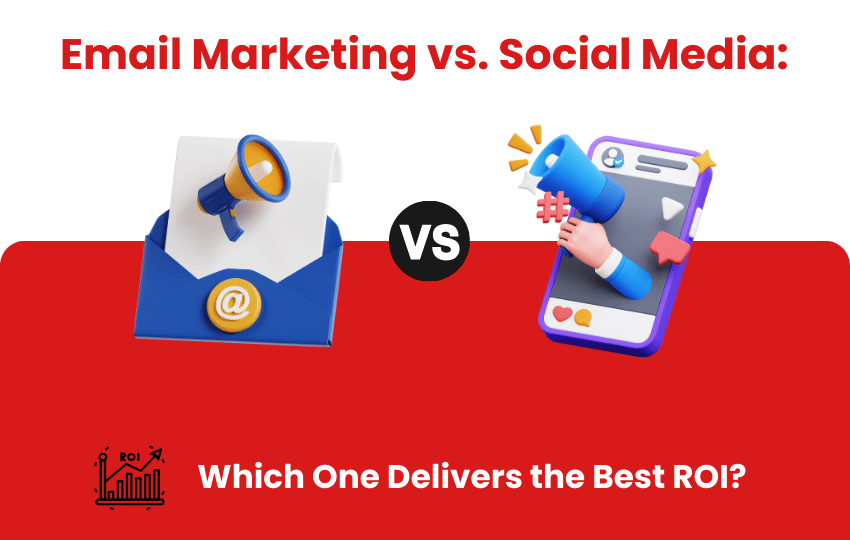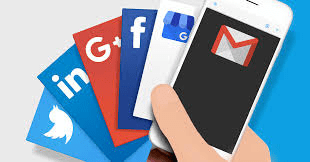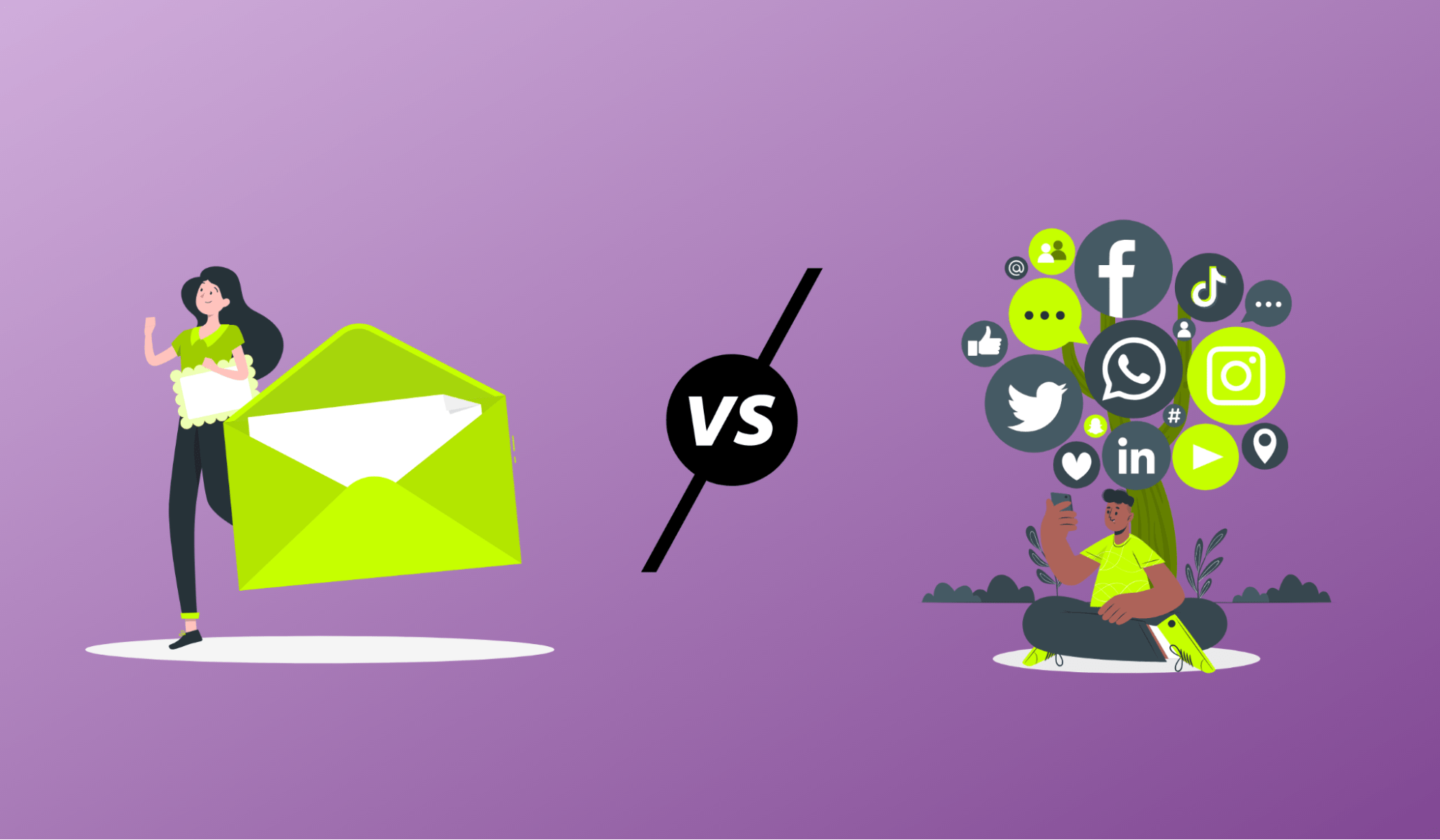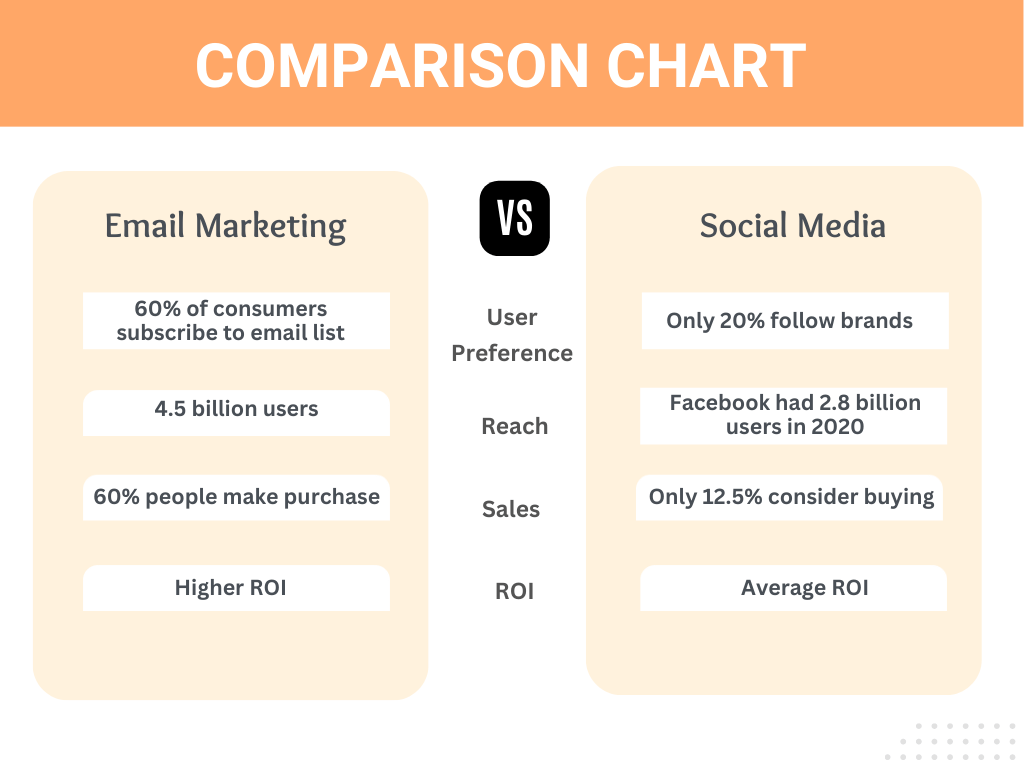
Email Marketing vs. Social Media: Which One Delivers the Best ROI?
As businesses continue to navigate the digital age in 2025, the debate between email marketing and social media remains at the forefront. Both platforms offer significant opportunities for engagement, brand awareness, and ultimately, driving conversions. However, the critical question is: which channel provides the highest return on investment (ROI)?

In this article, we’ll dive deep into the mechanics of both email marketing and social media, comparing their advantages, disadvantages, and effectiveness in driving ROI. We’ll break down the unique benefits of each, explore case studies and statistics, and help you determine the best approach to maximize your marketing efforts in 2025.
Email Marketing: A Reliable Strategy with Proven ROI
Email marketing has been one of the most consistent and profitable forms of digital marketing for years. In 2025, it continued to show exceptional ROI, with every $1 spent yielding an average return of $42, according to a report by the Data & Marketing Association (DMA). But what exactly makes email marketing so successful at driving returns?
1. Personalization & Segmentation: Tailoring Content to Subscribers
Email marketing thrives on personalization. By using data such as past purchase history, demographic information, and user behavior, marketers can create highly tailored email content. Personalized emails increase engagement rates and can lead to better conversions. Whether it’s personalized subject lines, product recommendations, or content suggestions, each element helps make the recipient feel like the email is crafted just for them.
Example: Amazon is a leader in email personalization. By analyzing a user’s browsing history and previous purchases, Amazon sends targeted product recommendations in email newsletters. This approach keeps customers engaged and encourages repeat purchases.

2. Automation: Maximizing Efficiency and Scale
One of the major advantages of email marketing is its ability to be automated. Automated workflows can be triggered based on customer behavior or set dates, ensuring that the right message reaches the recipient at the right time. This saves businesses significant time and resources while delivering a more personalized experience to the customer.
Example: A common use of email automation is abandoned cart emails. When a customer adds items to their cart but doesn’t check out, an automated email reminder can nudge them to complete their purchase. These automated emails can be timed and personalized based on the items in the cart.
3. Strong Conversion Rates: From Engagement to Action
Email marketing typically delivers higher conversion rates compared to social media. The reason for this is simple: subscribers have already opted in to receive emails, meaning they are more likely to engage with content that is sent directly to their inbox. Moreover, businesses can measure and track results directly from emails, optimizing for conversions.
Example: A B2B company may send a targeted email campaign that promotes a free trial of their software. Since the recipients are already interested in their services, the conversion rate for these campaigns is usually much higher than a social media ad promoting the same product.
4. Retaining Customers: Building Long-Term Loyalty
Email marketing plays a significant role in customer retention. By staying top-of-mind through regular and relevant emails, businesses can nurture relationships over time. Sending personalized content or offering loyalty rewards in emails fosters long-term customer loyalty, reducing churn.
Example: Starbucks uses its email list to send personalized promotions to loyal customers based on their purchasing habits, such as discounts on their favorite drinks, which incentivizes repeat purchases.
5. Cost-Effectiveness
When it comes to ROI, cost-effectiveness is one of email marketing’s standout features. Unlike social media ads, where costs can fluctuate, email marketing allows businesses to directly control their budget and campaign frequency. With the right tools and strategies, you can reach thousands of recipients for a fraction of the cost of a social media campaign.
Example: A small e-commerce business can use email marketing to engage its audience with weekly newsletters featuring exclusive offers or product updates. The cost per email is minimal, but the ROI is significant when these emails lead to conversions.

Social Media: Expanding Reach and Engagement in a Digital World
While email marketing has its established advantages, social media marketing has become an essential strategy for engaging with audiences at scale. With billions of active users across platforms like Instagram, Facebook, and LinkedIn, social media provides businesses with an incredible opportunity to connect with potential customers. However, social media’s direct ROI isn’t always as easy to measure as email marketing.
1. Brand Awareness: Reaching New Audiences
One of social media’s most significant strengths is its ability to drive brand awareness. With features like viral posts, paid ads, and influencer partnerships, social media platforms can spread content rapidly, reaching vast, untapped audiences.
Example: Nike is a great example of how social media can boost brand awareness. Their influencer partnerships and engaging content on Instagram generate viral conversations that increase brand visibility, especially among younger audiences.
2. High Engagement and Interactive Content
Social media excels in engagement. With likes, comments, shares, and direct messaging, platforms encourage a two-way conversation between brands and customers. This engagement creates a sense of community and connection, which can lead to stronger brand loyalty over time.
Example: Starbucks actively engages with customers on Twitter and Instagram, asking users for feedback and re-posting their content. This fosters a sense of community and encourages further interaction with the brand.
3. Paid Social Ads: Targeted Reach with Instant Results
Social media platforms offer powerful ad targeting capabilities that allow businesses to reach specific demographics, interests, and behaviors. While the ROI of paid social ads can sometimes be hard to track, the ability to segment audiences with pinpoint accuracy can drive immediate results.
Example: Facebook ads can target users who have shown interest in fitness products or have previously engaged with similar brands, ensuring that the ads are shown to the most relevant audiences.
4. Cost and Budget Flexibility
Social media ads, especially on platforms like Facebook, can be quite affordable, depending on the market. The flexibility of budget management allows businesses to scale their campaigns effectively, adjusting spend based on performance. However, costs can rise quickly with competition for ad space.
Example: A startup selling organic skincare products might begin with a small budget on Facebook ads, and if the campaign shows a good ROI, they can scale up their ad spend to increase visibility.
5. Analytics and Real-Time Feedback
Social media platforms provide real-time feedback on the performance of posts, ads, and engagement levels. Analytics tools offer valuable insights into what content resonates with your audience, allowing businesses to adjust strategies quickly for maximum impact.
Example: A fashion brand posts content about new arrivals on Instagram and uses the platform’s analytics to measure engagement. If a particular post performs well, they can create similar content to replicate the success.
Email Marketing vs. Social Media: A Side-by-Side Comparison
Both channels bring unique advantages, but when it comes to driving ROI, they serve different purposes. Let’s compare them in the following areas:
1. Conversion Rates
- Email: With a direct, personalized message, email has a higher conversion rate because recipients are already familiar with the brand. Emails are often more likely to result in a specific action, such as a purchase or sign-up.
- Social Media: Social media platforms have high engagement but lower conversion rates. Social media often serves as the top of the funnel for awareness, requiring more nurturing through other channels (like email) to convert users into customers.
2. Audience Reach
- Email: Email’s reach is limited to those who have opted into receiving communications. However, once you have a list, it’s yours to engage without third-party interference.
- Social Media: Social media allows businesses to reach new audiences beyond their current followers, increasing exposure. However, platform algorithms and the need for paid ads can limit organic reach.
3. Brand Awareness and Engagement
- Email: While email can nurture existing relationships, it doesn’t offer the same level of public engagement or viral potential as social media.
- Social Media: Social media shines in building brand awareness and fostering public engagement. Through likes, comments, shares, and direct interaction, social media creates a more dynamic connection with consumers.
Both email marketing and social media are essential, but the key to success lies in combining them strategically to maximize ROI.
Conclusion
Cybez offers expert solutions that help businesses harness the full potential of both email marketing and social media. With our tailored strategies, we focus on driving conversions through personalized email campaigns and building brand awareness through impactful social media services and content. Our team uses cutting-edge tools to automate, optimize, and analyze your marketing efforts. Partner with Cybez today to elevate your marketing strategy and achieve measurable results.

